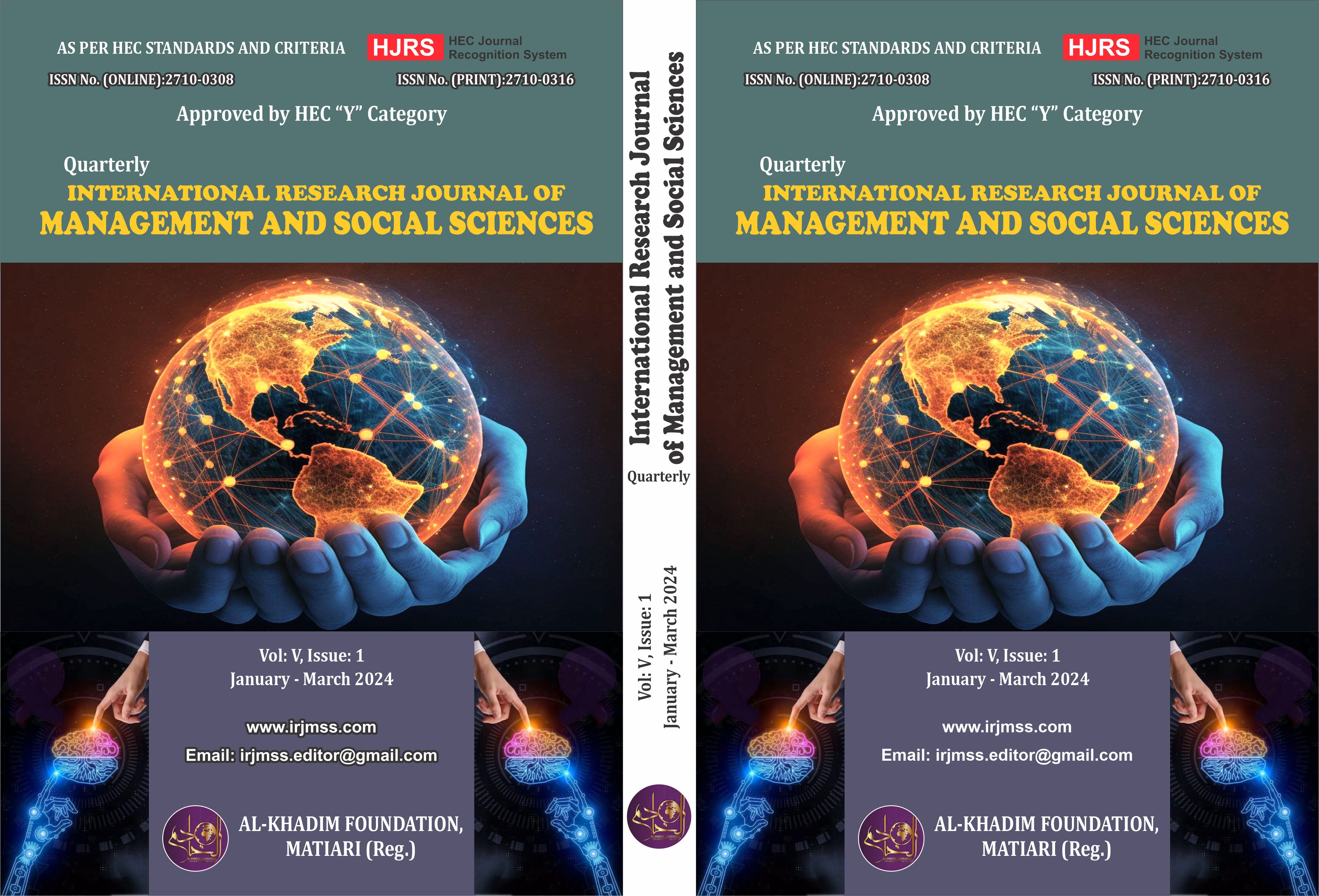Impacts of Socio-economic Factors on Language Shift: A Case Study of Siraiki L2 Learners
Keywords:
Language Shift, L2 Learners, Siraiki Language, Socio-economic Factors, Urdu LanguageAbstract
This study deals with the impacts of socioeconomic factors on language shift. This study was conducted to get the views of undergraduate students of Ghazi University, Dera Ghazi Khan. For data collection, a close-ended questionnaire was formulated and data was analysed through SPSS. The socioeconomic effects of switching from Saraiki to Urdu as the language of instruction have received positive responses from survey respondents. The majority of students agree that they speak Urdu at the university because they think it's more useful than Siraiki. The study found that the primary reason Saraiki students usually try to hide their language identity is linguistic indignity. They objected when the questionnaire asked about Saraiki language limitations in public areas. It came from the ethno language’s sense of vitality. They gave a positive response when asked if they felt uneasy speaking Siraiki in social or business contexts. However, they agreed with the notion that the linguistic change from Siraiki to Urdu has raised their social status. On the other hand, Siraiki students who were not exposed to Urdu still struggle with language barriers. The large majority of responders agreed that the linguistic shift from Siraiki to Urdu is greatly influenced by the Punjab province's educational policy.
References
Aitchison, J. (2005). Language change. In The Routledge Companion to Semiotics and Linguistics (pp. 111-120). Routledge.
Allen, S. E., Crago, M., & Pesco, D. (2006). The effect of majority language exposure on minority language skills: The case of Inuktitut. International Journal of Bilingual Education and Bilingualism, 9(5), 578-596.
Anthonissen, C. (2009). Bilingualism and language shift in Western Cape communities. Stellenbosch papers in linguistics PLUS, 38, 61-76.
Borbély, A. (2011). Languages and language varieties: comparative research on the linguistic attitudes in four bilingual minority communities in Hungary. Eesti ja soome-ugri keeleteaduse ajakiri. Journal of Estonian and Finno-Ugric Linguistics, 2(1), 41-56.
Cooper, R. L., & Fishman, J. A. (1974). The study of language attitudes.
Crystal, D. (1999). The future of Englishes. English Today, 15(2), 10-20.
Crystal, D. (2011). Internet linguistics: A student guide. Routledge.
De Klerk, V. (2000). Language shift in Grahamstown: A case study of selected Xhosa-speakers.
Dörnyei, Z. (2009). The L2 motivational self system. Motivation, language identity and the L2 self, 36(3), 9-11.
Dwyer, A. M. (2012). Handbook of descriptive linguistic fieldwork.
Fasold, R. W., & Connor-Linton, J. (Eds.). (2014). An introduction to language and linguistics. Cambridge university press.
Gal, S. (1978). Peasant men can't get wives: Language change and sex roles in a bilingual community. Language in society, 7(1), 1-16.
Grenoble, L. (2021). Sociolinguistics and language shift: toward understanding the processes of shift through the prism of speakers. Sociolingvistika, 2(6).
Hulsen, M., Bot, K. D., & Weltens, B. (2002). Between two worlds. Social networks, language shift, and language processing in three generations of Dutch migrants in New Zealand.
Kloss, H. (1966). Types of Multilingual Communities: A Discussion of Ten Variables. Sociological Inquiry, 36(2).
Knooihuizen, R. (2023). The linguistics of the history of English. Springer Nature.
Köpke, B. (2007). Language attrition at the crossroads of brain, mind, and society. Language attrition: Theoretical perspectives, 9-38.
McEwan-Fujita, E. (2010). Sociolinguistic ethnography of Gaelic communities. The Edinburgh Companion to the Gaelic Language, 172-217.
Messing, J. (2007). Ideologies of public and private uses of language in Tlaxcala, Mexico.
Michieka, M. (2012). Language maintenance and shift among Kenyan university students. In 41st Annual Conference on African Linguistics (pp. 164-170). Cascadilla Proceedings Project.
Milroy, J. (1998). Exploring linguistic variation to explain language change. na.
Paulston, C. B. (2002). Comment. International Journal of the Sociology of Language, 2002(157).
Pauwels, A. (2004). Language maintenance. The handbook of applied linguistics, 719-737.
Pauwels, P. (2016). Barcroft, Joe. 2015. Lexical Input Processing and Vocabulary Learning. ITL-International Journal of Applied Linguistics, 167(2), 235-240.
Ravindranath, M. (2009). Language shift and the speech community: Sociolinguistic change in a Garifuna community in Belize. Publicly accessible Penn Dissertations, 33.
Romaine, S. (2008). Language rights, human development and linguistic diversity in a globalizing world. Unity and diversity of languages, 85-96.
Schmid, H. J., & Ungerer, F. (2011). Cognitive linguistics. In The Routledge handbook of applied linguistics (pp. 611-624). Routledge.
Simons, G. F., & Lewis, M. (2013). The world’s languages in crisis. Responses to language endangerment: In honor of Mickey Noonan. New directions in language documentation and language revitalization, 3-20.
Simon, E., & Leuschner, T. (2010). Laryngeal systems in Dutch, English, and German: A contrastive phonological study on second and third language acquisition. Journal of Germanic Linguistics, 22(4), 403-424.
Van Aswegen, J. G. (2008). Language maintenance and shift in Ethiopia: The case of Maale (Doctoral dissertation, University of South Africa).






